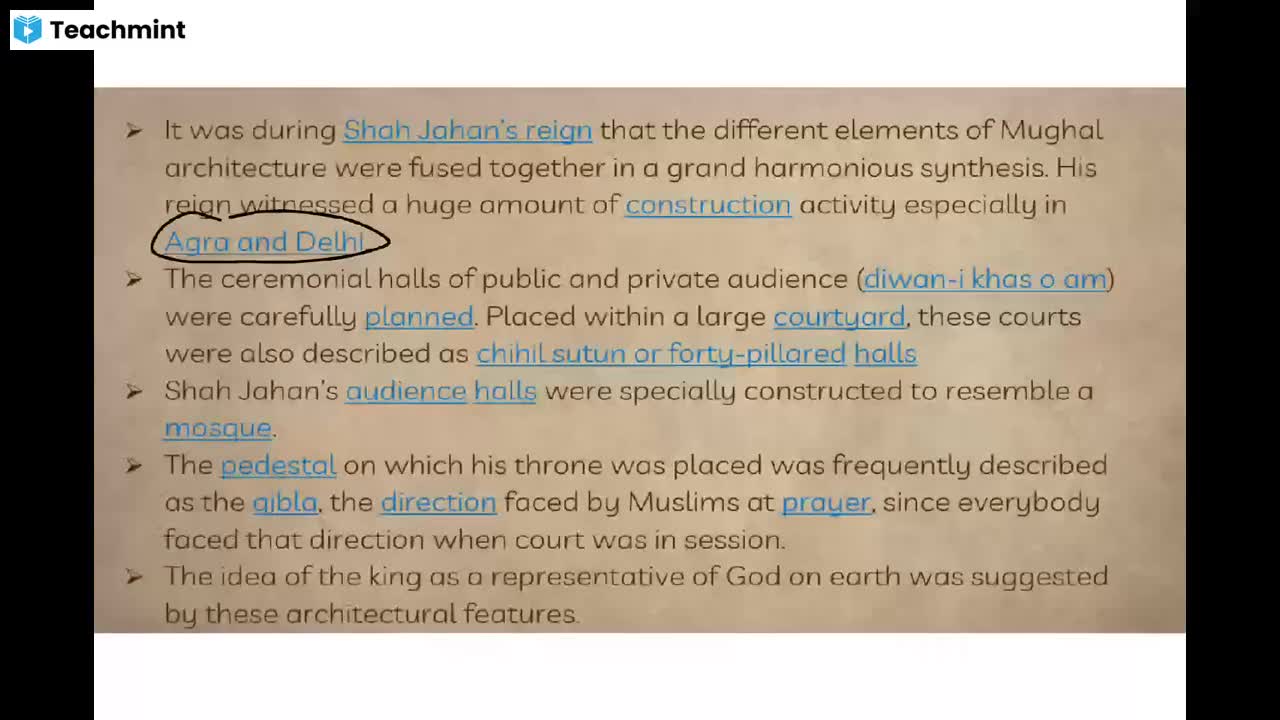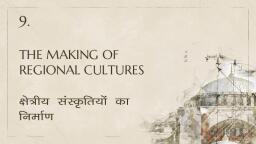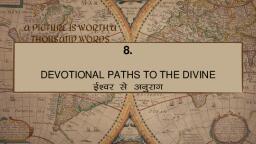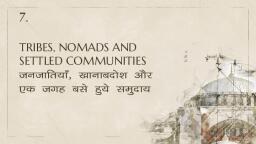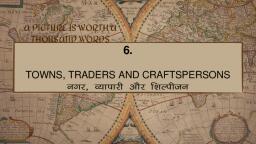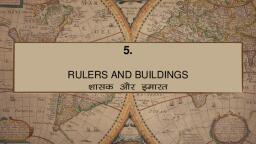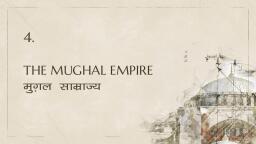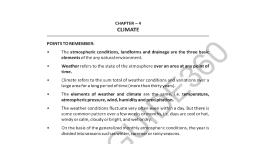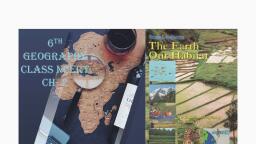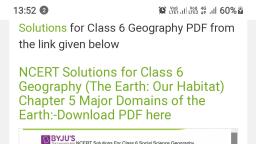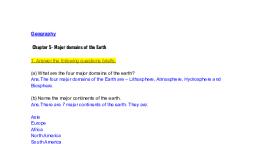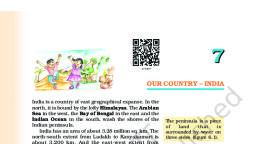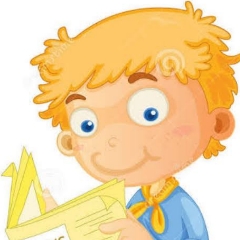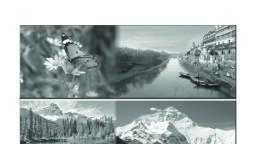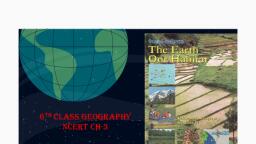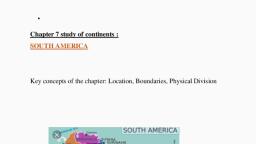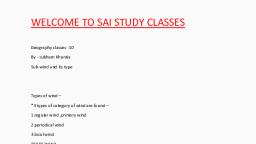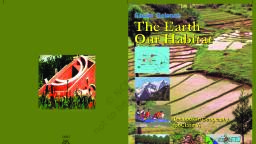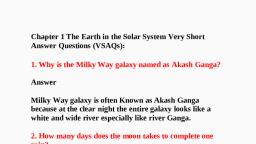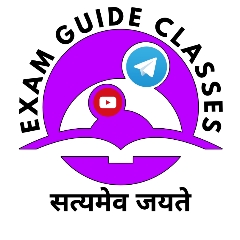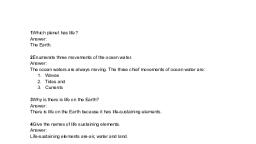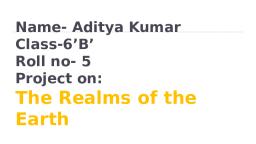Page 1 :
6TH CLASS, NCERT, GEOGRAPHY, CH-1
Page 2 :
THE EARTH IN THE SOLAR, SYSTEM, OVERVIEW, Object of Solar System, THE SOLAR SYSTEM, The Sun, Planets, The Earth, The Moon, Asteroids, Meteoroids, Galaxy, 2
Page 3 :
Celestial bodies (खगोलीय िपंड), The sun, the moon and all those objects shining in, the night sky are called celestial bodies., , Stars (िसतारे ), Some celestial bodies are very big and hot. They, are made up of gases. They have their own heat, and light, which they emit in large amounts. These, celestial bodies are called stars. Ex- The sun is a, star., 3
Page 4 :
Constellations. (तारामंडल), While watching the night sky, you, may notice various patterns formed, by different groups of stars. These, are called constellations., Ursa Major or Big Bear is one such, constellation. One of the most easily, recognizable constellation is the, Saptarishi (Saptaseven,rishi-sages)., It is a group of seven stars that, forms a part of Ursa Major, Constellation, 4
Page 5 :
Pole Star ( ुव तारा), In ancient times, people used, to determine directions, during the night with the, help of stars. The North star, indicates the north direction., It is also called the Pole Star., We can locate the position of, the Pole Star with the help of, the Saptarishi., 5
Page 6 :
Planets, , ( ह), , Some celestial bodies do not, have their own heat and light., They are lit by the light of the, stars. Such bodies are called, planets. The word ‘planet’ comes, from the Greek word “Planetai”, which means ‘wanderers’., , 6
Page 7 :
THE SOLAR SYSTEM, (सौरमं डल), The sun, eight planets,, satellites, and, some, other celestial bodies, known as asteroids and, meteoroids form the, solar system. We often, call it a solar family,with, the sun as its Head., , 7
Page 8 :
The Sun, The sun is in the centre of the, solar system. It is huge and, made up of extremely hot, gases. The sun is the ultimate, source of heat and light for the, solar system. The sun is about, 150 million km away from the, earth., , 8
Page 9 :
Planets ( ह), There are eight planets in, our solar system. They are:, Mercury,Venus,, Earth,, Mars,, Jupiter,, Saturn,, Uranus and Neptune., , MY VERY EFFICIENT MOTHER JUST SERVED US NUTS., 9
Page 10 :
Orbits (क ाओं), All the Eight Panets of the solar, system move around the sun in fixed, paths. These paths are elongated., They are called Orbits., Mercury is nearest to the sun. It, takes only about 88 days to, complete one round along its orbit., Venus is considered as ‘Earth’stwin’ because its size and shape, are very much similar to that of the, earth.
Page 11 :
Dwarf Planets (बौने ह), Till recently (August 2006),, Pluto was also considered a, planet., International, बौने ह, Astronomical, Union,, a, decision was taken that Pluto, like other celestial objects, (Ceres,, 2003, UB313), discovered in recent past, may be called ‘dwarf planets.”, 11
Page 12 :
The Earth, , (पृ ी), , The earth is the third nearest planet to the sun. In, size, it is the fifth largest planet. It is slightly flattened, at the poles. That is why, its shape is described as a, Geoid. Geoid means an earth-like shape., support life are probably found only on the, earth., It has water and air,, The air has life-supporting gases like oxygen., The outer space, the earth appears blue, because its two-thirds surface is covered by, water. It is, therefore, called a blue planet.
Page 13 :
The Moon (चं मा), Our earth has only one satellite, that, is, the moon. Its diametre is only, one-quarter that of the earth.It is, about 3,84,400 km away from us., The moon moves around the, earth in about 27 days.It takes, exactly the same time to, complete one spin As a result,, only one side of the moon is, visible to us on the earth., It has mountains, plains and, depressions on its surface.
Page 14 :
Satellite (उप ह), A Satellite is a celestial body that moves, around the planets in the same way as, the planets move around the sun., , Human-made Satellite, (मानव िनिम! त उप ह), A Human-made Satellite is an artificial, body. It is designed by scientists to, gather information about the universe or, for communication.
Page 15 :
Asteroids, , ( ु, , ह), , Apart from the stars, planets and, satellites, there are numerous tiny, bodies which also move around the, sun.These bodies are called, asteroids. They are found between, the orbits of Mars and Jupiter ., , 15
Page 16 :
Meteoroids (उ"ािपंड), The small pieces of rocks which, move around the sun are called, meteoroids. Sometimes these, meteoroids come near the earth, and tend to drop upon it. During, this process due to friction with, the air they get heated up and, burn. It causes a flash of light., Sometimes, a meteor without, being completely burnt, falls on, the earth and creates a hollow, 16
Page 17 :
Galaxy (आकाशगं गा), A galaxy is a huge system of, billions of stars, and clouds, of dust and gases.There are, millions of such galaxies that, make the Universe., Our solar system is a part of, Milky Way galaxy. In ancient, India, it was imagined to be a, river of light flowing in the, sky. Thus, it was named, Akash Ganga .
Page 18 :
Thanks, , 18
Page 19 :
6TH, GEOGRAPHY, CLASS NCERT, CH- 2
Page 20 :
GLOBE : LATITUDES AND LONGITUDES, , , , , , , , GLOBE, AXIS, EQUATOR, PARALLELS OF LATITUDES, IMPORTANT PARALLELS OF LATITUDES, HEAT ZONES OF THE EARTH
Page 21 :
Globe (, , ोब), , our planet earth is not, a sphere. It is slightly, flattened at the North, and the South Poles, and bulge in the, middle. Globe is a true, model (miniature form), of the earth. The globe, is not fixed. It can be, rotated the same way, as a top spin or a, potter’s, wheel, is, rotated.
Page 22 :
Axis, (अ ), Needle is fixed through the globe in a, tilted manner, which is called its axis., Two points on the globe through, which the needle passes are two, poles – North Pole and South, Pole., The globe can be moved around, this needle from west to east just, as the earth moves., The real earth has no such needle., It moves around its axis, which is, an imaginary line.
Page 23 :
Equator (भूम, Imaginary line running on the, globe divides it into two equal, parts. This line is known as the, equator., The northern half of the earth is, known, as, the, Northern, Hemisphere and the southern, half is known as the Southern, Hemisphere the equator is an, imaginary circular line and is a, very important reference point, to locate places on the earth., The equator represents the zero, degree latitude., , रे खा)
Page 24 :
Parallels of latitudes(अ ां शों का समां तर भाग), All parallel circles from the equator up to the, poles are called parallels of latitudes. Latitudes, are measured in degrees., Distance from the equator to either of the, poles is one-fourth of a circle round the, earth, it will measure ¼th of 360 degrees., 90 degrees north latitude marks the North, Pole and 90 degrees south latitude marks, the South Pole., All parallels north of the equator are called, ‘north latitudes.’ Similarly all parallels south, of the equator are called ‘south latitudes.’
Page 25 :
IMPORTANT PARALLELS OF LATITUDES, मह पूण (अ ां शों का समां तर भाग), Besides the equator (0°),, the North Pole (90°N) and, the South Pole (90° S),, there are four important, parallels of latitudes–, (i) Tropic of Cancer (23½°, N) in the Northern, Hemisphere. (ii) Tropic of, Capricorn (23½° S) in the, Southern Hemisphere. (iii), Arctic Circle at 66½° north, of the equator. (iv), Antarctic Circle at 66½°, south of the equator.
Page 26 :
HEAT ZONES OF THE EARTH, (पृ ी के गम े ), Torrid Zone (उ, , किटबं ध), , All latitudes in between the Tropic of Cancer, and the Tropic of Capricorn. This area,, therefore, receives the maximum heat and is, called the Torrid Zone., , Temperate Zones (तापमान े ), The Tropic of Cancer and the Arctic Circle in the, Northern Hemisphere, and the Tropic of Capricorn and, the Antarctic Circle in the Southern Hemisphere, have, moderate temperatures. These are, therefore, called, Temperate Zones.
Page 27 :
Frigid Zones (उदासीन े ), The Arctic Circle and the North Pole in the, Northern Hemisphere and the Antarctic, Circle and the South Pole in the Southern, Hemisphere, are very cold. It is because, here the sun does not rise much above the, horizon. Therefore, its rays are always, slanting and provide less heat. These are,, therefore, called Frigid Zones.
Page 28 :
WHAT ARE LONGITUDES?, To fix the position of a place, it is necessary to know something, more than the latitude of that place for example, that Tonga Islands, (in the Pacific Ocean) and Mauritius Islands (in the Indian Ocean), are situated on the same latitude (i.e., 20° S). Now, in order to, locate them precisely, we must find out how far east or west these, places are from a given line of reference running from the North, Pole to the South Pole. These lines of references are called the, meridians of longitude. and the distances between them are, measured in ‘degrees of longitude.’ Each degree is further divided, into minutes, and minutes into seconds. They are semicircles and, the distance between them decreases steadily polewards until it, becomes zero at the poles, where all the meridians meet.
Page 29 :
Prime Meridian ( धान म ा ), All countries decided that the count should, begin from the meridian which passed through, Greenwich, where the British Royal, Observatory is located. This meridian is called, the Prime Meridian Its value is 0° longitude, and from it we count 180° eastward as well as, 180° westward. The Prime Meridian and 180°, meridian divide the earth into two equal, halves, the Eastern Hemisphere and the, Western Hemisphere.
Page 30 :
WHY DO WE HAVE STANDARD TIME?, The local time of places which are on different meridians, are bound to differ. For example, it will be difficult to, prepare a time-table for trains which cross several, longitudes. In India, for instance, there will be a, difference of about 1 hour and 45 minutes in the local, times of Dwarka in Gujarat and Dibrugarh in Assam. It is,, therefore, necessary to adopt the local time of some, central meridian of a country as the standard time for the, country. In India, the longitude of 82½° E (82° 30'E) is, treated as the standard meridian. The local time at this, meridian is taken as the standard time for the whole, country. It is known as the Indian Standard Time (IST).
Page 31 :
Some countries have a, great longitudinal extent, and so they have adopted, more than one standard, time. For example, in, Russia, there are as many, as eleven standard times., The earth has been divided, into twenty-four time, zones of one hour each., Each zone thus covers 15°, of longitude.
Page 32 :
LONGITUDE AND TIME (दे शां तर और समय), The sun regularly rises and sets every day, and naturally, it is the best timekeeper throughout the world. Local time can be reckoned by the shadow, cast by the sun, which is the shortest at noon and longest at sunrise and, sunset. When the Prime Meridian of Greenwich has the sun at the highest, point in the sky, all the places along this meridian will have mid-day or noon., The earth rotates from west to east .The earth rotates 360° in about 24, hours, which means 15° an hour or 1° in four minutes. Thus, when it is 12, noon at Greenwich, the time at 15° east of Greenwich will be 15 × 4 = 60, minutes, i.e., 1 hour ahead of Greenwich time, which means 1 p.m. But at, 15° west of Greenwich, the time will be behind Greenwich time by one hour,, i.e., it will be 11.00 a.m. Similarly, at 180°, it will be midnight when it is 12, noon at Greenwich.
Page 33 :
THANK YOU
Page 34 :
6TH CLASS GEOGRAPHY, NCERT CH-3
Page 35 :
MOTIONS OF THE EARTH, ●, ●, ●, ●, ●, ●, , Rotation, Revolution, Orbital plane, Circle of illumination, Leap year, Seasons
Page 36 :
The earth has two types of motions –, Rotation (घूणन), The movement of the earth on its axis., , Revolution (प र मण), , The movement of the earth around the, sun in a fixed path or orbit is called, Revolution.
Page 37 :
Orbital plane (क ीय, तल), The axis of the earth, which is an imaginary, line, makes an angle of, 66½° with its orbital, plane. The plane formed, by the orbit is known as, the orbital plane.
Page 38 :
Circle of illumination ( दी, , वृ ), , The earth receives light from the sun. Due to the, spherical shape of the earth, only half of it gets, light from the sun at a time . The portion facing, the sun experiences day while the other half, away from the sun experiences night. The circle, that divides the day from night on the globe is, called the circle of illumination. The earth takes, about 24 hours to complete one rotation around, its axis. The period of rotation is known as the, earthday.
Page 39 :
Leap year (लीप वष), Earth takes 365¼ days (one year) to, revolve around the sun. We consider a year, as consisting of 365 days only and ignore, six hours for the sake of convenience Six, hours saved every year are added to make, one day (24 hours) over a span of four, years. This surplus day is added to the, month of February. Thus every fourth year,, February is of 29 days instead of 28, days.Such a year with 366 days is called a, leap year. The earth is going around the, sun in an elliptical orbit.
Page 40 :
Seasons (मौसम), A year is usually divided into summer, winter, spring and autumn, seasons. Seasons change due to the change in the position of the, earth around the sun., , Summer Solstice ( ी, , आयनात), , On 21st June, the Northern Hemisphere is, tilted towards the sun. The rays of the sun, fall directly on the Tropic of Cancer. As a, result, these areas receive more heat. The, longest day and the shortest night at these, places occur on 21st June. At this time in the, Southern Hemisphere all these conditions, are reversed. It is winter season there. The, nights are longer than the days.This position, of the earth is called the Summer Solstice.
Page 42 :
Winter Solstice (शीत आयनात), On 22nd December, the Tropic of, Capricorn receives direct rays of the sun, as the South Pole tilts towards it. As the, sun’s rays fall vertically at the Tropic of, Capricorn (23½° S), a larger portion of the, Southern, Hemisphere, gets, light., Therefore, it is summer in the Southern, Hemisphere with longer days and shorter, nights. The reverse happens in the, Northern Hemisphere. This position of the, earth is called the Winter Solstice.
Page 43 :
Equinox (िवषुव), On, 21st, March, and, September 23rd, direct rays, of the sun fall on the, equator. At this position,, neither of the poles is tilted, towards the sun; so, the, whole earth experiences, equal days and equal nights., This is called an equinox.
Page 44 :
Autumn season and Spring season, (शरद ऋतु और बसं त ऋतु ), On 23rd September, it is autumn season, in the Northern Hemisphere and spring, season in the Southern Hemisphere. The, opposite is the case on 21st March, when, it is spring in the Northern Hemisphere, and autumn in the Southern Hemisphere.
Page 45 :
THANKS
Page 47 :
A map is a representation or a drawing of the, earth’s surface or a part of it drawn on a flat, surface according to a scale., They are of different types of maps1. PHYSICAL MAPS -Maps showing natural features, of the earth such as mountains, plateaus, plains,, rivers, oceans etc. are called physical or relief, maps., 2. POLITICAL MAPS -Maps showing cities, towns, and villages, and different countries and states of, the world with their boundaries are called political, maps.
Page 48 :
3. THEMATIC MAPS- Some maps focus on specific, information; sumaps, rainfall maps, maps showing, distribution of forests, industries etc. are known as, thematic maps.
Page 49 :
There are three Components of Maps 1. DISTANCE-Maps are drawings, which reduce the, entire world or a part of it to fit on a sheet of paper., Or we can say maps are drawn to reduced scales. But, this reduction is done very carefully so that the, distance between the places is real. It can only be, possible when a small distance on paper represents a, large distance on the ground.Therefore, a scale is, chosen for this purpose. Scale is the ratio between, the actual distance on the groundand the distance, shown on the map.
Page 50 :
• Small scale map- When large areas like continents or, countries are to be shown on a paper, then we use a, small scale. For example 5 cm. on the map shows 500, km. of the ground. It is called a small scale., , • Large scale map- When a small area like your village, or town is to be shown on paper, then we use a large, scale that is 5cm. on the map shows 500 metres only, on the ground.It is called a large scale map.
Page 51 :
2. DIRECTION-Most maps contain an arrow marked with, the letter ‘N’ at the upper right hand corner. This arrow, shows the north direction. It is called the north line., When you know the north, you can find out other, directions,for example east, west and south., • Cardinal points-There are four major directions,, North, South, East and West They are called, cardinal, points. Other four intermediate directions are northeast (NE), southeast(SE), south-west (SW) and northwest (NW).
Page 52 :
Cardinal points
Page 53 :
3. SYMBOLS - It is not possible to draw on a map the, actual shape and size of different features such as, buildings, roads, bridges, trees, railway lines or a well. So,, they are shown by using certain letters, shades, colours,, pictures and lines.These symbols give a lot of information, in a limited space. With the use of these symbols, maps, can be drawn easily and are simple to read., , • Conventional symbols- Maps have a universal, language that can be understood by all. There is an, international agreement regarding the use of these, symbols. These are called conventional symbols.
Page 54 :
Conventional symbols
Page 55 :
• SKETCH -A sketch is a drawing mainly based on, memory and spot observation and not to scale. Such a, rough drawing is drawn without scale, and is called a, sketch map., , • PLAN- Plan is a drawing of a small area on a large scale.
Page 57 :
6TH CLASS, GEOGRAPHY, NCERT CH-5
Page 58 :
OVERVIEW, MAJOR DOMAINS OF THE EARTH, Lithosphere, • Continent, Hydrosphere, • Ocean, Biosphere
Page 59 :
The surface of the earth is a complex zone in which three main components of, the environment meet,overlap and interact., , Lithosphere( थलमंडल)-The, solid portion of the earth is called, the Lithosphere. It comprises the, rocks of the earth’s crust and the, thin layers of soil that contain, nutrient elements which sustain, organisms., There are two main divisions of, the earth’s surface.1. Continents, 2. ocean basins.
Page 60 :
Continents (महा ीप), There are seven major continents. These are, separated by large water bodies. These, continents are – Asia, Europe, Africa, North, America, South America, Australia and, Antarctica. the greater part of the land mass lies, in the Northern Hemisphere., , Asia (एिशया)- Asia is the largest continent. It covers, about one third of the total land area of the earth. The, continent lies in the Eastern Hemisphere. The Tropic of, Cancer passes through this continent. Asia is separated, from Europe by the Ural mountains on the west The, combined landmass of Europe and Asia is called the, Eurasia (Europe + Asia).
Page 61 :
Europe (यूरोप) -, , Europe is much smaller, than Asia. The continent lies to the west of, Asia. The Arctic Circle passes through it. It is, bound by water bodies on three sides., , Africa (अ ीका) - The second largest continent after, Asia.The Equator or 0 degree latitude runs almost, through the middle of the continent. A large part of Africa, lies in the Northern Hemisphere .it is the only continent, through which the Tropic of Cancer, the Equator and the, Tropic of Capricorn pass. The Sahara Desert, the, world’s largest hot desert, is located in Africa. The, continent is bound on all sides by oceans and seas. The, world’s longest river the Nile,flows through Africa.
Page 62 :
North, , America(उ री, , अमे रका)-North, , America is the third largest continent of the, world. It is linked to South America by a very, narrow strip of land called the Isthmus of, Panama. The continent lies completely in the, Northern and Western, Hemisphere. Three oceans surround this, continent., , South America(दि णी अमे रका)- South, America lies mostly in the Southern, Hemisphere. Which two oceans surround it on, the east and the west. The Andes, world’s, longest mountain range, runs through its, length from north to south .South America has, the world’s largest river, the Amazon.
Page 63 :
Australia(ऑ, , े िलया)-, , Australia is the, smallest continent that lies entirely in the, Southern Hemisphere. It is surrounded on all, sides by the oceans and seas. It is called an, island continent., , Antarctica(अंटाकिटक)-, , Antarctica,, completely in the Southern Hemisphere,is a, huge continent. The South Pole lies almost at, the centre of this continent. As it is located in, the South Polar Region, it is permanently, covered with thick ice sheets. There are no, permanent human settlements. Many countries, have research stations in Antarctica. India also, has research stations there. These are named as, Maitri and Dakshin Gangotri.
Page 64 :
HYDROSPHERE (जलमंडल)- The earth is called the blue planet. More than 71, percent of the earth is covered with water and 29 percent is with land., .Hydrosphere consists of water in all its, forms. As running water in oceans and, rivers and in lakes, ice in, glaciers,underground water and the, water vapour in atmosphere, all, comprise the hydrosphere.More than, 97% of the Earth’s water is found in the, oceans and is too salty for human use., A large proportion of the rest of the, water is in the form of icesheets and, glaciers or under the ground and a very, small percentage is available as fresh, water for human.
Page 65 :
Oceans(महासागर)-, , Oceans are the major part of hydrosphere. They are all, interconnected.The ocean waters are always moving. The three chief movements of ocean, waters are the waves, the tides and the ocean currents. The five major oceans are the, Pacific Ocean, the Atlantic Ocean, the Indian Ocean, the Southern Ocean and the Arctic, Ocean, in order of their size., , The Pacific Ocean($शांत, महासागर)-The Pacific Ocean is, the largest ocean. It is spread, over one-third of the earth., Mariana Trench, the deepest, part of the earth, lies in the, Pacific Ocean. The Pacific Ocean, is almost circular in shape. Asia,, Australia North and South, Americas surround it.
Page 66 :
The Atlantic Ocean (अटलांिटक महासागर) The Atlantic Ocean is the second largest Ocean in the, world. It is ‘S’ shaped. It is flanked by the North and, South Americas on the western side, and Europe and, Africa on the eastern side The coastline of Atlantic, Ocean is highly indented. This irregular and indented, coastline provides ideal location for natural harbours, and ports. From the point of view of commerce, it is the, busiest Ocean., , The Indian Ocean (िह& महासागर) -The, Indian Ocean is the only ocean named after a, country, that is, India. The shape of ocean is, almost triangular. In the north, it is bound by, Asia, in the west by Africa and in the east by, Australia.
Page 67 :
The Arctic Ocean (आकिटक, महासागर)-The Arctic Ocean is located, within the Arctic Circle and surrounds the, North Pole. It is connected with the Pacific, Ocean by a narrow stretch of shallow water, known as Berring strait. It is bound by, northern coasts of North America and, Eurasia., , The Southern Ocean (दि णी महासागर) The Southern Ocean encircles the continent of, Antarctica and extends northward to 60 degrees, south latitude.
Page 68 :
ATMOSPHERE, (वायु मंडल), The earth is surrounded by a layer, of gas called the atmosphere. It, provides us with the air we breathe, and protects us from the harmful, effects of sun’s rays .atmosphere, extends up to a height of about, 1,600 kilometres. The atmosphere, is divided into five layers based on, composition, temperature and other, properties. These layers starting, from earth’s surface are called the, troposphere, the stratosphere, the, mesosphere, the thermosphere and, the exosphere.
Page 69 :
Composition of Atmosphere (वायुमंडल के संघटक), The atmosphere is composed mainly of nitrogen and oxygen, which make up about 99 per, cent of clean,dry air. Nitrogen 78 per cent, oxygen 21 per cent and other gases like, carbondioxide, argon and others comprise 1 percent by volume., Oxygen is the breath of life while nitrogen helps, in the growth of living organisms., Carbon dioxide, though present in minute, amount, is important as it absorbs heat radiated, by the earth, thereby keeping the planet warm., It is also essential for the growth of plants., The density of the atmosphere varies with, height. Itis maximum at the sea level and, decreases rapidly as we go up., The temperature also decreases as we go, upwards., The atmosphere exerts pressure on the, earth. Some areas experience high, pressure and some areas low pressure. Air, moves from high pressure to low pressure., Moving airis known as wind.
Page 70 :
BIOSPHERE (जैवमंडल), The biosphere is the narrow, zone of contact between the, land, water and air. It is in this, zone that life, that is unique to, this planet, exists., There are several species of, organisms that vary in size, from microbes and bacteria to, huge mammals. All the living, organisms including humans, are linked to each other and, to the biosphere for survival., The, organisms, in, the, biosphere may broadly be, divided into the plant kingdom, and the animal kingdom.
Page 72 :
6th Class NCERT, Geography Ch-6
Page 74 :
LANDFORMS (भूआकृितयां), The surface of the earth is not the same everywhere. The earth, has an infinite variety of landforms. Some parts of the lithosphere, may be rugged and some flat., These landforms are a result, of two processes., The first, internal process, leads to the upliftment an, d sinking of the earth’s, surface at several places., The second, external process is the continuous, wearing down and rebuil, ding of the land surface.
Page 75 :
Erosion (अपरदन) -The wearing away of the earth’s surface is called, erosion., , Deposition (िन ेप)- The surface is being, lowered by the process of erosion and, built by the process of deposition., , re, , These two processes are carried, out by running water, ice and, wind. Broadly, we can group, different landforms depending on, elevation and slope as mountain, s,plateaus and plains.
Page 76 :
MOUNTAINS (पवत), A mountain is any natural elevation of the earth surface. The mo, untains may have a small summit and a broad base., Some mountains are even hig, her than the clouds Mountains, may be arranged in a line kno, wn as range. The Himalayas,, the Alps and the Andes are mo, untain ranges of Asia, Europe, and South America, respectiv, ely.Mountains vary in their hei, ghts and shape
Page 77 :
There are three types of mountains-, , Fold Mountains (मोड़दार पवत)-The Himalayan Mountains and the A, lps are young fold mountains with rugged relief and high conical peaks., The Aravali range in India is, one of the oldest fold mountain, systems in the world.The range, has considerably worn down, due to the processes of erosio, n. The Appalachians in North, America and the Ural mountain, s in Russia have rounded feat, ures and low elevation. They, are very old fold mountains
Page 78 :
Block Mountains (, , ॉक पवत), , Block Mountains are created when large areas are broken and, displaced vertically. The uplifted blocks are termed as horsts and, the lowered blocks are called graben. The Rhine valley and the, Vosges mountain in Europe are examples of such mountain, systems.
Page 79 :
Volcanic Mountains (, , ालामुखी पवत), , Volcanic mountains are formed due to volcanic activity. Mt.Kilim, anjaro in Africa and Mt.Fujiyamain Japan are examples of such, mountains.
Page 80 :
PLATEAUS (पठार), Plateau is an elevated flat land. It is a flat-topped table land standing ab, ove the surrounding area. A plateau may have one or more sides with, steep slopes., The height of plateaus often varies fr, om few hundred metres to several th, ousand metres. The Deccan plateau, in India is one of the oldest plateaus., The East African Plateau in Kenya, T, anzania and Uganda and the Wester, n plateau of Australia are other exam, ples. The Tibet plateau is the highes, t plateau in the world with a height of, 4,000 to 6,000 metres above the me, an sea level.
Page 81 :
The lava plateaus are rich in black soil that are fertile and good for, cultivation many of the mining areas in the world are located in the, plateau areas., The African plateau is famous for, gold and diamond mining. In, India huge reserves of iron, coal, and manganese are found in the, Chhotanagpur plateau. there may, be several waterfalls as the river, falls from a great height. In India,, the Hundru falls in the Chhotana, gpur plateau on the river Subarna, rekha and the Jog falls in Karnata, ka are examples of such waterfall, s.
Page 82 :
PLAINS (मैदान), Plains are large stretches of flat land. They are, generally, not more, than 200 metres above mean sea level. Most of the plains are forme, d by rivers and their tributaries., The rivers flow down the slopes, of mountains and erode them., They carry forward the eroded, material. Then they deposit th, eir load consisting of stones, sa, nd and silt along their courses, and in their valleys.It is from t, hese deposits that plains are f, ormed. Generally, plains are, very fertile. Construction of tran, sport network is easy. Plains ar, e the most useful areas for, human habitation.
Page 83 :
LANDFORMS AND THE PEOPLE ( थलाकृित और लोग), Humans have been living on different kinds of landforms in different, ways. Life is difficult in mountainous areas. Plains provide much bett, er conditions. It is easy to grow crops, build a house or a road in a, plain than a mountain., Sometimes,natural calami, ties such as earthquakes,, volcanic eruption, storms, and floods cause widespr, ead destruction. Huge los, s of life and property take, s place. By creative awar, eness about such inciden, ces we may lower the risk, s.
Page 84 :
THANKS
Page 85 :
6th Class Geography, NCERT Ch-7
Page 86 :
OUR COUNTRY – INDIA, , Introduction, Locational setting, India’s Neighbours, Political and, Administrative Division, Physical Division
Page 87 :
India is a country of vast geographical, expanse. In the north, it is bound by, the lofty Himalayas. The Arabian Sea in, the west, the Bay of Bengal in the east, and the Indian Ocean in the south,, wash the shores of the Indian, peninsula. India has an area of about, 3.28 million sq. km. The north-south, extent from Kashmir to Kanyakumari is, about 3,200 km. And the east-west, extent from Arunachal Pradesh to, Kuchchh is about 2,900 km.
Page 88 :
The lofty mountains, the Great Indian, Desert, the Northern Plains, the, uneven plateau surface and the coasts, and islands present a diversity of, landforms.There is a great variety in, the climate, vegetation, wildlife as well, as in the language and culture. In this, diversity, we find unity that is reflected, in traditions that bind us as one, nation.
Page 89 :
LOCATIONAL SETTING, ( थानीय थती), India is located in the northern, hemisphere. The Tropic of, Cancer, (23°30'N), passes, almost halfway through the, country ., From south to north, main land, of India extends between 8°4'N, and 37°6'N latitudes. From, west to east, India extends, between 68°7'E and 97°25'E, longitudes.
Page 90 :
Due to great longitudinal extent of about 29°, there could, be a wide differences in local time of places located at, two extreme points of India., As such, the difference between these two points would, be of about two hours. The sun rises about two hours, earlier in the east(Arunachal Pradesh) than in the west, (Gujarat)., The local time of longitude of 82°30'E has been taken as, the Indian Standard Time., This meridian or longitude is also termed as the, Standard Meridian of India.
Page 91 :
INDIA’S NEIGHBOURS, (भारत के पडोसी दे श), There are seven countries that share, land boundaries with India., 1. Afghanistan, 2. Pakistan, 3. Nepal, 4. Bhutan, Nepal, 5. Bangladesh, 6. China, 7. Myanmar, Across the sea to the south, lie our island, neighbours—, Sri Lanka and Maldives. Sri Lanka is, separated from India by the Palk Strait.
Page 92 :
POLITICAL AND, ADMINISTRATIVE DIVISIONS, (राजनीितक एवं शासिनक िवभाजन), , India is a vast country. For, administrative purposes, the, country is divided into 29 States, and, 9, Union, Territories, (Appendix-I). Delhi is the, national capital. The states have, been formed mainly on the basis, of languages.
Page 93 :
PHYSICAL DIVISIONS, (भौितक िवभाजन), India is marked by a diversity of, physical features such as mountains,, plateaus, plains, coasts and islands., Standing as sentinels in the north, are, the, lofty, snow-capped, Himalayas. Him+alaya mean ‘the, abode of snow’., The Himalayan mountains are, divided into three main parallel, ranges. The northernmost is the, Great Himalaya or Himadri.
Page 94 :
The world’s highest peaks are located in this range., Middle Himalaya or Himachal lies to the south of Himadri The, Shiwalik is the southernmost range., The Northern Indian plains lie to the south of the Himalayas., They are generally level and flat. These are formed by the, alluvial deposits laid down by the rivers– the Indus, the Ganga,, the Brahmaputra and their tributaries., These river plains provide fertile land for cultivation. That is the, reason for high concentration of population in these plain
Page 95 :
In the western part of India lies, the Great Indian desert. To the, south of northern plains lies the, Peninsular, plateau., It, is, triangular in shape. The relief is, highly uneven. This is a region, with numerous hill ranges and, valleys., Aravali hills, one of the oldest, ranges of the world, border it on, the north-west side., The Vindhyas and the Satpuras, are the important ranges.
Page 96 :
The rivers Narmada and Tapi flow through, these ranges. These are west flowing rivers, that drain into the Arabian Sea., The Western Ghats or Sahyadris border the, plateau in the west and the Eastern Ghats, provide the eastern boundary. While the, Western Ghats are almost continuous, the, Eastern Ghats are broken and uneven .
Page 97 :
To the West of the Western Ghats and the East of, Eastern Ghats lie the Coastal plains., The western coastal plains are very narrow., The eastern Coastal plains are much broader., There are a number of east flowing rivers. The rivers, Mahanadi, Godavari, Krishna and Kaveri drain into, the Bay of Bengal., These rivers have formed fertile deltas at their mouth., The Sunderban delta is formed where the Ganga and, Brahmaputra flow into the Bay of Bengal.
Page 98 :
Two groups of islands also form, part of India. Lakshadweep Islands, are located in the Arabian Sea., These are coral islands located off, the coast of Kerala., The Andaman and the Nicobar, Islands lie to the southeast of the, Indian mainland in the Bay of, Bengal.
Page 99 :
THANKS
Page 100 :
6TH CLASS, NCERT, GEOGRAPHY, CH-8
Page 101 :
INDIA : CLIMATE,, VEGETATION AND WILDLIFE, OVERVIEW, WEATHER, NATURAL VEGETATION, WILD LIFE, , , , ,
Page 102 :
WEATHER, Weather (मौसम), is about day to day changes in the, atmosphere. It includes changes in, temperature, rainfall and sunshine etc. For, example, as such it may be hot or cold;, sunny or cloudy; windy or calm.
Page 103 :
WEATHER, COLD WEATHER SEASON, OR WINTER (ठ का मौसम, या शीत ऋतु), During the winter season, the sun, rays do not fall directly in the, region., As, a, result, the, temperatures are quite low in, northern India.
Page 104 :
WEATHER, HOT WEATHER SEASON, OR SUMMER (गम का मौसम, या ी ऋतु), In the hot weather season sun rays, more or less directly fall in this, region. Temperature becomes very, high. Hot and dry winds called loo,, blow during the day.
Page 105 :
WEATHER, SOUTH, WEST, MONSOON, SEASON OR RAINY SEASON, (दि णी प ीमी मानसून या वष ऋतु), This season is marked by the onset and, advance of monsoon. The winds blow, from Arabian Sea and Bay of Bengal, towards the land. They carry moisture, with them. When these winds strike the, mountain barriers, rainfall occurs.
Page 106 :
WEATHER, SEASON OF RETREATING, MONSOONS OR AUTUMN, (लौटता मानसून या पतझड़), Winds move back from the mainland, to the Bay of Bengal. This is the, season of the retreating monsoons., The southern parts of India,, particularly Tamil Nadu and Andhra, Pradesh receive rainfall in this season.
Page 107 :
WEATHER, The climate is about the, average weather condition,, which have been measured, over many years., Monsoon is taken from the, Arabic word ‘mausim’, which, means seasons.
Page 108 :
NATURAL VEGETATION, The grasses, shrubs and, trees, which grow on their, own without interference or, help from human beings are, called natural vegetation.
Page 109 :
NATURAL VEGETATION, WHY ARE FORESTS, NECESSARY? (वन !ों, आव%क है ?), Forests are very useful for us., They perform various functions., Plants release oxygen that we, breathe and absorb carbon, dioxide. The roots of the plants, bind the soil; thus, they control, soil erosion.
Page 110 :
NATURAL VEGETATION, Forests provide us with timber for, furniture, fuel wood, fodder,, medicinal plants and herbs, lac,, honey, gum, etc., Forests are the natural habitat of, wild life.
Page 111 :
WILD LIFE, Forests are home to a, variety of wild life. There are, thousands of species of, animals and a large variety, of reptiles, amphibians,, mammals, birds, insects, and worms which dwell in, the forest.
Page 112 :
WILD LIFE, NATIONAL ANIMAL(रा)*ीय पशु ), The tiger is our national animal. It is, found in various parts of the country. Gir, forest in Gujarat is the home of Asiatic, lions., Elephants, and, one-horned, rhinoceroses roam in the forests of, Assam. Elephants are also found in, Kerala and Karnataka.
Page 113 :
WILD LIFE, NATIONAL BIRD (रा)*ीय प ी), India is equally rich in bird life. The, peacock is our national bird. Other, common birds are parrots, pigeons,, mynah, geese, bulbul and ducks., There are several bird sanctuaries, which have been created to give, birds their natural habitat. These, provide the birds protection from, hunters.



